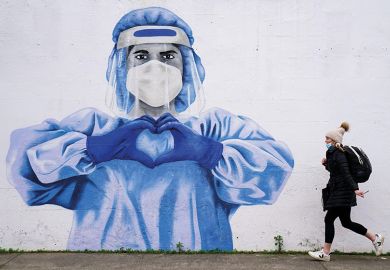No experience is more universal than confronting mortality. Poets and philosophers have grappled with the finite nature of earthly existence for generations, using beautiful words to wring sense from the unfathomable. What more could possibly be left to say?
And yet the living continue to devour stories of the dead. The passing of celebrities triggers outpourings of public sentiment, these days amplified to an almost unbearable pitch by social media. But even a brief news item about a stranger’s death can elicit the gamut of private emotions: sadness at the loss of someone’s father, son, brother, lover. Anger at the random nature of oblivion. Relief that it was not our turn, this time – and dread that one day it surely will be. We might abandon that newspaper on a train seat, but the sensation lingers, an uncomfortable thorn in the side of our everyday vitality.
This emotional universality probably explains why the diaries of the dying are so popular. The neurologist Oliver Sacks riveted the world as his unflinching eye turned from his patients’ quirks to his own slow demise from liver cancer last summer. We are, it seems, eager to brush against our ultimate enemy and, in doing so, absorb any unearthly wisdom that might rub off.
When Breath Becomes Air is at once like, and unlike, other works in the terminal illness genre – and that’s what makes it so interesting. The first-person protagonist of this memoir is a young doctor, Paul Kalanithi – an ordinary person with an extraordinary voice. Steeped in the works that he studied when English literature was his passion, Kalanithi is well placed to put his cancer diagnosis into a civilisation’s worth of context, from Camus and Cervantes to Shakespeare and Sartre.
Thanks to the back-cover blurb, we know from the outset that Kalanithi, a talented neurosurgeon, has already died. The first scene sees him examining the fateful scan, “the lungs…matted with innumerable tumors, the spine deformed, a full lobe of the liver obliterated”. Sitting in the same room where he has delivered bad news to countless families, he finds himself gowned up and on a drip, the roles abruptly reversed. In one sense, the book is as much about his transition from doctor to patient, and the messy overlap in between, as it is about mortality.
Kalanithi studied literature at university because he had come to see language as “an almost supernatural force” that could explain human morality and meaning. But during the course of his studies, he became fascinated by the biological strings executing this magic, and he added in neuroscience courses to make sense of it all. In the end, language ran aground. Kalanithi concluded that “direct experience of life-and-death questions was essential to generating substantial moral opinions about them. Words began to feel as weightless as the breath that carried them.” So he headed off to medical school.
It seemed the right choice. He turns out to be brilliant and successful, with a supportive wife and his entire future before him. But neurosurgery is probably the most gruelling specialty, taking its toll on both body and mind. A close colleague of his jumps off the roof after losing a patient. One night he comes across a friend weeping with guilt because she is so tired that she’s prayed to God that her patient has metastases, so that she won’t have to face a nine-hour operation. (Her prayers are answered, and the procedure is cancelled.)
Death is everywhere: “Normally, you breathed it in, without noticing it. But some days, like a humid muggy day, it had a suffocating weight of its own.” And then, worse, he becomes inured: “In the midst of this endless barrage of head injuries, I began to suspect that being so close to the fiery light of such moments only blinded me to their nature, like trying to learn astronomy by staring directly at the sun.”
He comes out the other side a better doctor, acting not as death’s enemy but as its “ambassador”. He wrestles control of the long hours and the punishing schedule. Prestigious job offers beckon. But just a few months away from completing his residency, the cancer bomb drops.
There is something fittingly literary about his having abandoned English for medicine to experience life and death first-hand, only to get a little closer than he’d intended. At this pivotal crossroads, he finds himself unable to follow in the footsteps of the many patients to whom he’s delivered a terminal diagnosis. Instead he sees “only a blank, a harsh, vacant, gleaming white desert, as if a sandstorm had erased all traces of familiarity”.
What really frustrates Kalanithi is that the diagnosis does not offer the certainty needed to plan for his future: he might have months left, or years. Should he and his wife hasten their plans to start a family with IVF? What should he do about his career? He muses, “If I had two years, I’d write. If I had ten, I’d get back to surgery and science.” As readers we can understand Kalanithi’s decision to go for the baby, but we can’t help but be horrified when he decides to return to work full throttle – because we know the ending to this story, even if he does not.
He writes: “I was operating until late at night or into the early morning…My body was taking a beating. I was too tired to eat when I got home. I had been slowly upping the dose of Tylenol and NSAIDS and antiemetics…I only had to keep up this relentless pace for a couple more months.”
How many months did he shave off his life with this decision? Why was he doing it at all? Was it truly the call of his vocation, or was it rather pride, a high-flyer’s fear of failure? The first-person narration may be a bit unreliable on this point, but we can forgive that.
What we do know is that hard work did not relieve his existential angst. Lost in a “featureless wasteland” of his own mortality, and finding “no traction in the reams of scientific studies, intracellular molecular pathways, and endless curves of survival statistics”, his old friend literature comes to the rescue. Kalanithi reads book after book on death, seeking a useful vocabulary to understand his plight. The only way he can process his experiences is to “translate them back into language”. His account is matter-of-fact, never self-pitying and often funny. “It occurred to me”, he quips, “that my relationship with statistics changed as soon as I became one.” He employs just the right tone to keep the reader engaged without inspiring depression or despair – even though he’d be well within his rights to mope.
After a brief, elating remission, things go downhill quickly. The book’s end reveals an unfinished narrative. This is both frustrating and fitting: the account becomes a larger metaphor for untimely demise. His wife Lucy completes the narrative in an accomplished epilogue, but although we want to know how he died, it might have been better to leave it be. It turns out that there is more to say about death after all – but each story is a solitary, highly personal one, and only he could have told this one.
Jennifer Rohn is principal research associate in nephrology, division of medicine, University College London.
When Breath Becomes Air
By Paul Kalanithi
Bodley Head, 256pp, £12.99
ISBN 9781847923677
Published 4 February 2016
In the anatomy lab
An excerpt from Paul Kalanithi’s When Breath Becomes Air on his studies at the Yale School of Medicine.
In anatomy lab, we objectified the dead, literally reducing them to organs, tissues, nerves, muscles. On that first day, you simply could not deny the humanity of the corpse. But by the time you’d skinned the limbs, sliced through inconvenient muscles, pulled out the lungs, cut open the heart, and removed a lobe of the liver, it was hard to recognize this pile of tissue as human. Anatomy lab, in the end, becomes less a violation of the sacred and more something that interferes with happy hour, and that realization discomfits. In our rare reflective moments, we were all silently apologizing to our cadavers, not because we sensed the transgression but because we did not.
It was not a simple evil, however. All of medicine, not just cadaver dissection, trespasses into sacred spheres. Doctors invade the body in every way imaginable. They see people at their most vulnerable, their most scared, their most private. They escort them into the world, and then back out. Seeing the body as matter and mechanism is the flip side to easing the most profound human suffering. By the same token, the most profound human suffering becomes a mere pedagogical tool. Anatomy professors are perhaps the extreme end of this relationship, yet their kinship to the cadavers remains. Early on, when I made a long, quick cut through my donor’s diaphragm in order to ease finding the splenic artery, our proctor was both livid and horrified. Not because I had destroyed an important structure or misunderstood a key concept or ruined a future dissection but because I had seemed so cavalier about it. The look on his face, his inability to vocalize his sadness, taught me more about medicine than any lecture I would ever attend. When I explained that another anatomy professor had told me to make the cut, our proctor’s sadness turned to rage, and suddenly red-faced professors were being dragged into the hallway.
Other times, the kinship was much simpler. Once, while showing us the ruins of our donor’s pancreatic cancer, the professor asked, “How old is this fellow?”
“Seventy-four,” we replied.
“That’s my age,” he said, set down the probe, and walked away.
后记
Print headline: Each of us will have a final word




